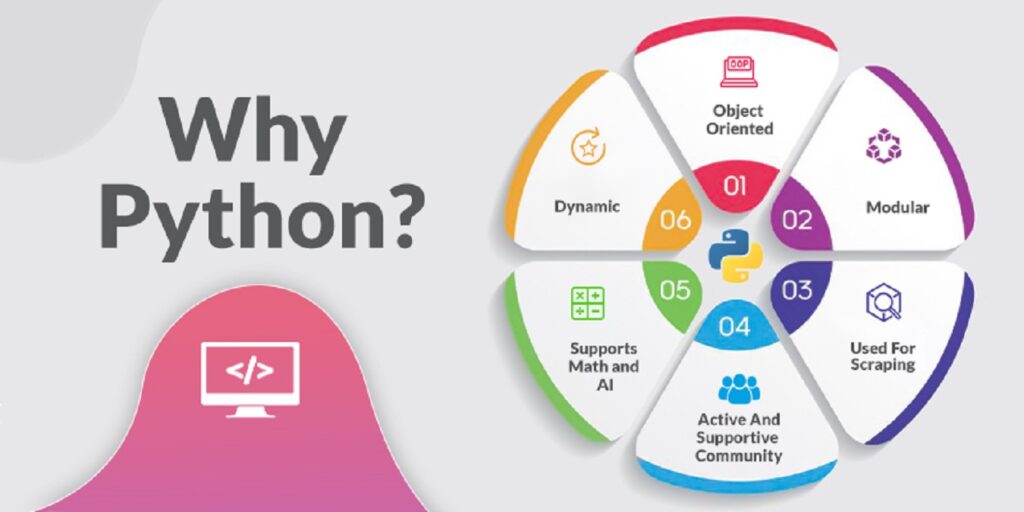Python, a versatile and powerful programming language, has established itself as one of the most popular choices among developers across the globe. Renowned for its simplicity, readability, and an extensive range of libraries, Python has found applications in various fields, from web development to financial analysis.

Understanding Python
Python is an interpreted, high-level programming language. Its syntax emphasises code readability and reduces the cost of program maintenance. One of the standout features of Python is its use of whitespace indentation to delimit code blocks, a characteristic that not only enforces clean code but also contributes to its elegance.
Key features of Python
Ease of learning and readability
Python’s simple and straightforward syntax makes it an ideal choice for beginners. The language’s readability resembles natural language, allowing developers to focus on solving problems rather than grappling with complex syntax.
Versatility
Python can be used for a wide array of applications, including web development, data analysis, artificial intelligence, scientific computing, automation, and more. Its versatility stems from its extensive standard library and third-party packages.
Community and support
The Python community is exceptionally vibrant and supportive. Developers can access a plethora of resources, forums, and tutorials, making problem-solving and learning more efficient.
Applications of Python
Web development
Python is widely employed in web development to build dynamic and responsive websites. Python’s integration with HTML, CSS, and JavaScript simplifies the development process.
Data analysis and visualisation
Python’s libraries make it a preferred choice for data analysts and scientists. These tools enable efficient data manipulation, exploration, and visualisation, fostering insights and informed decision-making.
Quantitative analysis and risk management
Python is extensively employed in quantitative analysis, where complex financial models are built and evaluated. Python facilitates risk assessment, portfolio optimisation, and derivative pricing. Python’s flexibility allows analysts to model intricate financial scenarios and perform stress testing with relative ease.
Scientific computing
Scientists and researchers in various fields utilise Python for simulations, data modelling, and complex calculations. The language’s ease of use and availability of scientific libraries make it an ideal platform for scientific computing.
Automation and scripting
Python’s simplicity lends itself well to automation and scripting tasks. It’s commonly used to create scripts that automate repetitive tasks, making workflows more efficient and reducing manual intervention.
Conclusion
Python’s widespread adoption can be attributed to its user-friendly syntax, expansive library ecosystem, and applicability across diverse domains. From web development to scientific research, artificial intelligence to automation, Python has proven its mettle as a versatile programming language.
Mastering Python can open doors to countless opportunities. Whether you’re interested in building websites, delving into data science, or exploring the realms of artificial intelligence, Python offers the tools and resources you need. Consider enrolling in a python data science course to harness the language’s potential and unlock a world of possibilities. Remember, the only limit to what you can achieve with Python is your own creativity.







Leave a Comment
You must be logged in to post a comment.